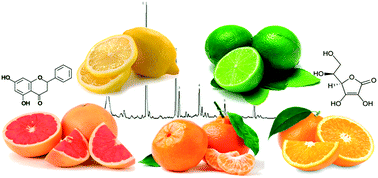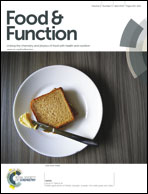Phytochemistry and biological activity of Spanish Citrus fruits
Abstract
The evaluation of the potential inhibitory activity on α-glucosidase and pancreatic lipase by Citrus spp. fruits of Spanish origin (lemon, orange, grapefruit, lime, and mandarin) together with the evaluation of their phytochemical content and antioxidant capacity (DPPH˙, ORACFL, ABTS+, FRAP and O2˙−) aiming for new applications of the fruits in nutrition and health was carried out. As far as we are aware, the presence of 3-O-caffeoylferuoylquinic acid and two hydrated feruloylquinic acids in orange and the presence of 3,5-diferuoylquinic acid in grapefruit have been reported for the first time. Although grapefruit showed higher contents of phytochemicals such as flavanones and vitamin C, lemon and lime showed higher potential for inhibitory effects on lipase, and lime also showed the best results for in vitro α-glucosidase inhibition. On the other hand, higher antioxidant capacity was reported for grapefruit, lemon and lime, which correlated well with their phytochemical composition. Based on the results, it could be concluded that Citrus fruits are of great value for nutrition and treatment of diet-related diseases such as obesity and diabetes, and consequently, a new field of interest in the food industry regarding new bioactive ingredients would be considered.


 Please wait while we load your content...
Please wait while we load your content...